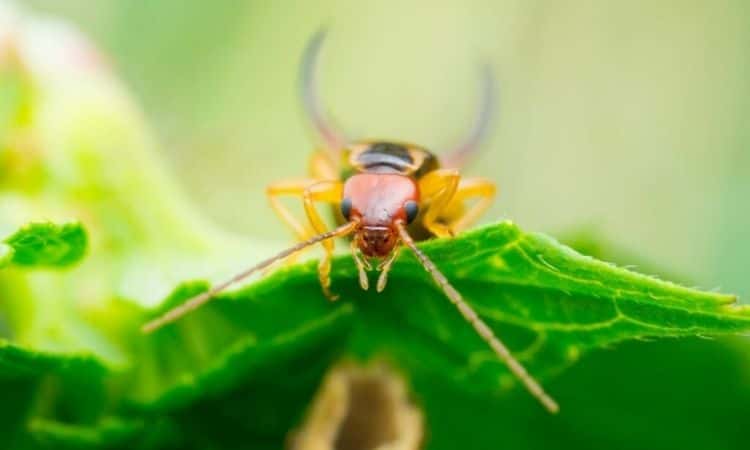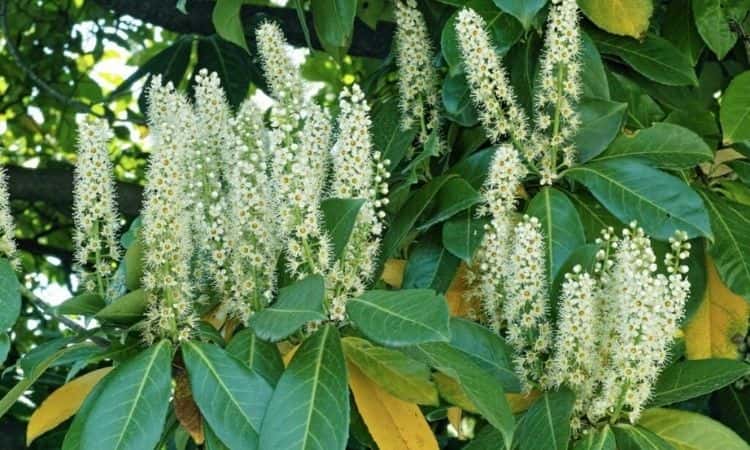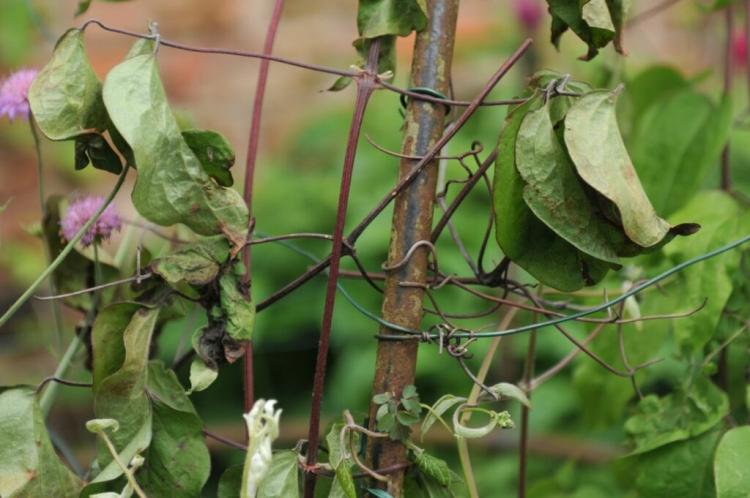Earwigs: Useful Or Dangerous?
Earwigs, of course, do not belong in the apartment. But are they dangerous and do they really crawl into the ear at night? Here are the facts. Man has not really warmed to the earwig – or earwigs in general – since the Middle Ages. Yet new findings have completely changed the light on him: Now it is said to be not a malicious parasite of our ears, but a useful garden helper. We enlighten you about whether the earwig is now useful, harmful, or dangerous.
First, we will describe the earwig in a sober way, then we will clarify whether earwigs actually do anything to our ears. And after we have summarized whether it is a beneficial insect or a pest, we will explain how an earwig hotel in the garden can promote small animals.
Earwig: description and way of life
Table of Contents
Earwigs belong to the order of earwigs (Dermaptera). For at least 34 million years, the included genus Forficula has existed, which includes the earwig found in our country and in North America. Although earwigs taxonomically belong to flying insects, most of them rarely or never fly. Their hardened forewings conceal their membranous hindwings, which they can fold intricately.
In the case of the common earwig (Forficula auricularia), the hind wings are reduced to the point where they can barely fly. It has biting, chewing mouthparts and is an omnivore. Rarely it is also interested in selected species of ornamental plants or fruits. With a body length of only 9 to 16 mm, it is a small representative of its order – in Australia, earwigs live up to 6.5 cm long.
The pincers – called cerci – are used for hunting, defense, unfolding wings, and mating. Forficula auricularia is what is commonly referred to in Germany as “the earwig” or, alternatively, the ear shrew, ear louse, or even earwrusler.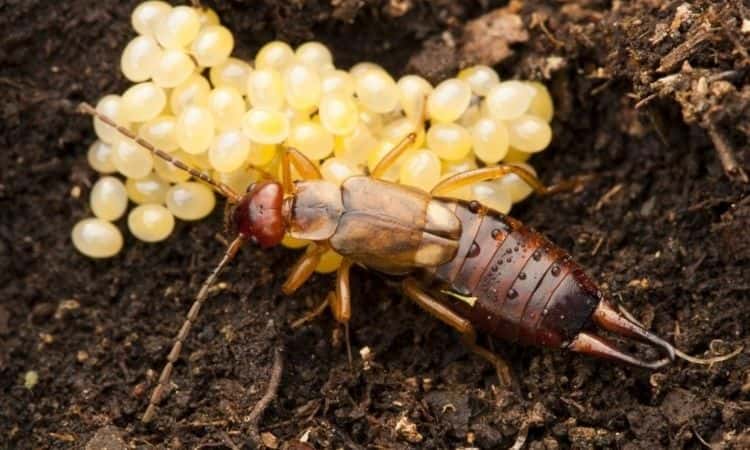
Its way of life is cryptic, under damp leaves or bark, in cracks and crevices, it finds food and also lays its eggs there. It only gets into the house by chance, but sheds, garages, balconies, and garden sheds are often chosen as its quarters. Here you can find out how to get rid of the earwig in the house, apartment, and garden with traps or how to combat it.
Earwigs in the ear: myth or truth?
In the Middle Ages, it was believed that earwigs crawl into our ears at night, rupture the eardrum with their pincers, and then lay their eggs in our skulls. Although the Middle Ages were long ago, a certain uneasiness still remains due to the naming. Incidentally, this was even anchored in the Latin name: auricula means “little ear”. And the fact that earwigs like to stay in beds is just as easy to explain: beds are often slightly damp – nowadays only if they are not ventilated, but in the Middle Ages the dampness from houses could hardly be expelled, especially in rainy times.
The earwigs also liked the confinement and darkness, and this is probably how the myth of the dangerous, crawling pest originated. Perhaps as revenge, the animals were later used as ear medicine: Ground and sprinkled in the ears, they were supposed to cure hearing loss, ear diseases, or even deafness.
The earwig as a pest
Earwigs can occur as pests on grain stores, ripening grapes and peaches, and on some ornamental plants – including clematis (Clematis), trumpet flower (Campsis radicans), angel’s trumpet (Brugmansia), and dahlias (Dahlia). This behavior is the exception rather than the rule, but no pesticide has yet been approved for control, so infestation in commercial crops may well cause problems.
Because the earwigs often get into the crop during harvesting, they also cause additional costs, because the harvest now has to be controlled more extensively. In the vast majority of cases, however, the earwig limits itself to consuming fruit and plants that have already been damaged by other insects – it is therefore almost never responsible for the primary damage.
It may occasionally appear in human dwellings, but it does not become a plague because the animals never produce more than two generations per year. However, in damp and dark sheds, garages, garden sheds, and on shaded balconies, they like to find a place to live, which they then populate too many.
If you want to break up such a camp, learn how to do it in this article on earwigs in the home. An effective, yet the biological method of getting rid of the unpleasant subtenants and repellent. It can also be used safely indoors.
The earwig is a beneficial insect
There is a reason why there is not yet a proper control agent for earwigs in the field: They are actually either harmless or even quite beneficial most of the time.Because they feed primarily on detritus – organic waste – and fungi, as well as algae, they are part of the valuable soil life and involved in the formation of humus and the release of nutrients. Because it also consumes small insects, it serves us in part as a beneficial insect: aphids and other slow-moving plant pests are occasionally eaten, as well as the eggs of various moths and even powdery mildew fungi.
Last but not least, earwigs themselves are, of course, food for welcome garden guests such as sparrows, hedgehogs, and shrews. So if you want to take advantage of the clout of earwigs and can occasionally get over a nibbled leaf edge or a secondarily colonized apple, you should not hesitate to settle earwigs rather than fight them.
Bottom line: is the earwig beneficial or dangerous?
In the garden, the earwig is more useful than harmful, and even in our gazebos and sheds, it is more annoying and unpleasant than actually dangerous. Its large pincers and primeval appearance are especially frightening to children. Here, you should refrain from perpetuating the old wives’ tale of parasitic earwigs.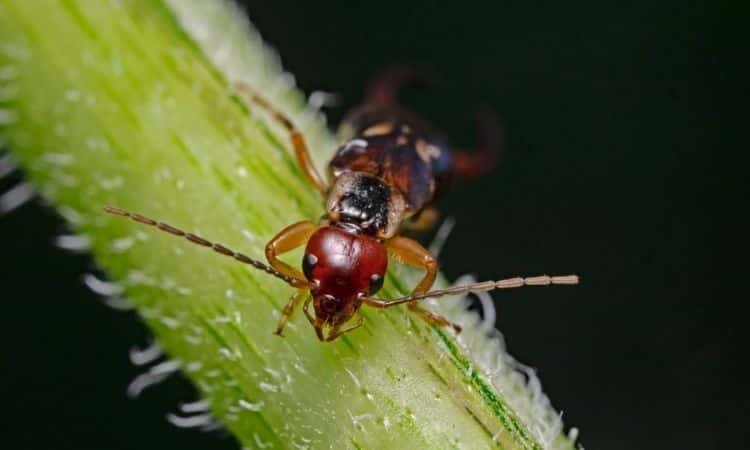
There are many non-toxic and therefore harmless for humans and (domestic) animals methods to get rid of the little animal – we have summarized them for you in this article on the earwig in the apartment. Our advice is to consistently keep the earwig out of human dwellings with the help of our Gardender organic ant repellent but to tolerate or even encourage it in the garden. This is easy to do: with an earwig hotel, which you can easily make yourself according to our instructions.
You might so like: Bees In The Garden: Everything You Need To Know About It
Attract earwigs flower pot
To encourage earwigs, you can make them a good shelter. Such an earwig hotel quickly leads to regular gatherings of quite sociable animals. Eggs are also laid here and are protected from many predators.
- Use a classic clay pot. If you want to hang it later, it should have a hole.
- Fill the pot with straw, hay, or wood wool and dust it with a handful of soil.
- Pinch out a round shape from chick wire that overhangs the rim of the pot by about 3 inches when held away from it.
- Close the clay pot with the grid by bending it around the pot opening and looping a wire around it, twisting it tightly.
You can place the pot prepared in this way in the bed or hang it from trees or sticks. When hanging, make sure that the pot is in direct contact with the tree or other natural means of ascent.
Also, it is convenient if the pot does not get too wet inside when it rains: For this purpose, you can cover the hole in the bottom, for example, with glued clay shards.
